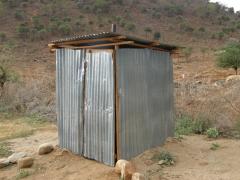Setting national emission ceilings for air pollutants: policy lessons from an ex-post evaluation of the Gothenburg Protocol
The Protocol to Abate Acidification, Eutrophication and Ground-level Ozone, or Gothenburg Protocol (UNECE EB, 1999), was developed within the framework of the UN Convention on Long Range Transboundary Air Pollution (CLRTAP). This Convention was adopted in 1979 and formed the first successful international agreement to take common legally binding actions against air pollution (GC, 1979). Currently there are 51 parties to the Convention and the region covered extends from North America to Europe and Central Asia.
This paper compares the assumptions made for the establishment of the Gothenburg Protocol emission ceilings in 1999 for six Parties to the Protocol (Ireland, Italy, the Netherlands, Spain, Sweden, and Portugal) with corresponding contemporary reviews of national data, emissions and assumptions. The broad objectives of this ex-post analysis are to answer the following questions:
- How accurate were the projections used for the Gothenburg Protocol?
- What can we learn from the differences between projections and realisations?
The Gothenburg Protocol set national emission ceilings for transboundary air pollutants in 2010. These ceilings were formulated in 1999 using the Regional Air Pollution Information and Simulation (RAINS) model and national forecast data. The 2010 ceiling deadline is approaching as is a revision process which may lead to the setting of emission ceilings for 2020. This paper considers the original 1999 projections of six countries that were used within the RAINS model to inform the setting of their respective Gothenburg Protocol 2010 emission ceilings. These data are then contrast against recent inventory data and contemporary short-term forecasts out to 2010.
These recent forecasts indicate that major downward shifts in the trends of pollutant emissions have been achieved, and whilst compliance challenges remain, there is a clear indication of the potential of such international agreements and their associated legislative and policy driven mechanisms. However, in a process governed by a maxim of achieving international environmental objectives at ‘least-cost’, the recent experience offers some valuable lessons. Specifically, in relation to the accuracy of energy projections and assumptions of other relevant variables in the modelling process. This paper considers these lessons and opens a discussion on the role of more adaptable mechanisms for the ongoing management of international agreements with long-term compliance horizons.
Authors
Specifications
- Publication title
- Setting national emission ceilings for air pollutants: policy lessons from an ex-post evaluation of the Gothenburg Protocol
- Publication date
- 1 February 2010
- Publication type
- Publicatie
- Magazine
- Environ Sci Policy 2010; 13(1):28-41
- Product number
- 92456




